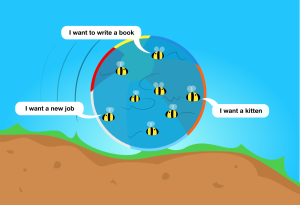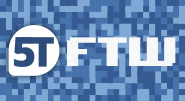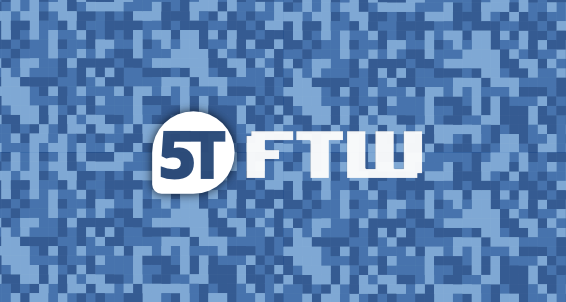Fedora is a big project, and it’s hard to keep up with everything that goes on. This series highlights interesting happenings in five different areas every week. It isn’t comprehensive news coverage — just quick summaries with links to each. Here are the five things for November 14th, 2014:
Fedora Council Elections
We are in the “campaign season” (okay, “campaign week”) for the first general election for representatives for the new Fedora Council. (If you haven’t been following, see the Council charter on the Fedora Wiki. The “Coda” in that document should answer most of your questions, and if you have others, please feel free to ask them.)
- Haïkel Guémar (number80)
- Pete Travis (randomuser)
- Michael Scherer (misc)
- Rex Dieter (rdieter)
- Langdon White (langdon)
(with IRC nicknames in parentheses).
Visit the nomination page for a brief-self introduction from each candidate, and stay tuned for more from each (including an e-mail interview to be published on Fedora Magazine at the beginning of next week).
Voting opens on the 18th, and will run for a week.
Flock to Rochester
Flock is our big annual conference for Fedora contributors and developers, where we meet in person to share our work and develop plans for the future. It alternates yearly between North America and Europe (complemented by user-and-developer FUDCons in the APAC and LATAM regions), and the location is chosen by a bid process.
The Flock planning team has announced the final selection of Rochester, NY and the Rochester Institute of Technology (RIT) as our location for 2015. Read the details, and take a look at the original bid if you’re curious. (Note that the specific dates have not yet been finalized. More to come!)
Fedora Workstation and the Target Audience
With last week’s beta announcement and its emphasis on the three different “flavors” of Fedora that we’re promoting, we got a  couple of concerned messages on Fedora Magazine and social media, expressing worry that the “software developer” target audience of Fedora Workstation excludes non-developer enthusiast or even non-savvy desktop users.
couple of concerned messages on Fedora Magazine and social media, expressing worry that the “software developer” target audience of Fedora Workstation excludes non-developer enthusiast or even non-savvy desktop users.
So, here’s the deal: currently, Fedora is not really growing users. (Despite some claims to the contrary, we’re not collapsing either, but it’s basically flat.) We don’t have the resources for a mass market push, and overall, trying to be all things to all people ends up being not ideal for anyone. That’s not just a platitude — it’s hard for designers to know what to design for, and we can’t do user testing or quantify feedback in an actionable way without guidance on audience.
As I was thinking about this, the article If you want to follow your dreams, you have to say no to all the alternatives came across one of my newsfeeds, and it struck me as very relevant.
People never want to do one thing. We want to do all the things. We simultaneously want to exercise and to learn Spanish and to go out for pizza. Our desires are countless, independent agents, working to nudge our beachball in their own selfish direction.
And so usually, that ball is going nowhere. It’s controlled more by the terrain than by the will of what’s inside it.
That’s what we’re doing here; by focusing marking effort (and real development resources) on a target we are confident we can solidly hit, we’ll actually get there — with real user-base and ultimately project growth. Then, in the future, we can expand even further from that success into other areas.
That doesn’t mean that non-developer users are going to be left in the cold, or excluded from Fedora. Developers are people too, and generally want everything a normal human being would want from a desktop — browsing the web, listening to music, editing photographs, and so on. And we don’t want developers just using Fedora on work systems which stay in an office — we want them using Fedora everywhere. From the Fedora Workstation PRD, which describes the intended target in depth:
While the developer workstation is the main target of this system and what we try to design this for, we do of course also welcome other users to the Fedora Workstation. In fact many of the changes and improvements we expect to implement for developers will be equally beneficial to other user segments, for instance our plans around multi-screen handling and improved terminal functionality should also be highly beneficial to a system administrator. Or the work we are doing to provide a high performance graphics workstation would be useful to people who want a linux gaming PC. Or a student who just want a system with a productivity suite to write their papers will of course get benefit from the fact that we do ship a good productivity suite. We will welcome feedback and request from all our users and try to accommodate it as long as it doesn’t negatively impact our developer target group and we have people available who have the time and ability to work on the requests.
Without this kind of focus, we end up with what I like to refer to as a “bag of bricks” style distribution, where we have all the parts, and users are asked to put together their own favorite configuration. That turns out to not actually be a distribution for everyone at all — it inherently makes a niche of people who like to tinker with their system. But, I think we actually serve those people really well no matter what the marketing is. That’s an essential part of Fedora, and there is no plan to take it away. Take a look (or look back, if you’ve seen it already) at my DevConf.cz 2014 presentation on Fedora.next, and especially the “Lego vs. Playmobil section.
As I say at the top of every 5tFTW, Fedora is a really big project. Even more so than an individual person’s brain, we are like a ton of bees going in all sorts of directions. But, unlike the motivational-speaker analogy, we’re not really missing out on anything if someone wants to work in their own time on a part of the project which isn’t directly aligned with the overall objectives, that’s actually awesome (as long as it isn’t directly in conflict, of course).
Also, don’t forget that Fedora isn’t just a desktop distribution and never was. With new emphasis on Fedora Server, we’re bringing that out from under the carpet. And Fedora Cloud (and Atomic) give us a foothold in important new areas of innovation. These are different directions, but the Fedora.next plan is to separate them as much as possible so that the metaphorical bees in each one can succeed independently.
I hope this helps clear things up; I’ll be happy to discuss further here or anywhere. I think that this direction for Fedora Workstation is going to yield great results for everyone, even people outside of the direct target. However, if it doesn’t end up being the desktop for you, that’s fine — we’ve got a great KDE spin, plus Xfce, MATE, and so on.
Fedora Atomic Test Builds
The Fedora Atomic team and the Cloud Working Group didn’t quite have everything lined up for the  Fedora 21 Beta release, and as Atomic is a “non-blocking” tech preview for this release, that didn’t hold up the whole process. We now have nightly builds of Atomic images that are close to what’s planned for the final F21 release at the beginning of December. We’ll update the “get pre-release!” website soon, but in the meantime, launch in Amazon EC2 or download a qcow2 directly from our build system. (Note that these images are meant for cloud environments and require some tweaking if you want to run them stand-alone in a local VM.)
Fedora 21 Beta release, and as Atomic is a “non-blocking” tech preview for this release, that didn’t hold up the whole process. We now have nightly builds of Atomic images that are close to what’s planned for the final F21 release at the beginning of December. We’ll update the “get pre-release!” website soon, but in the meantime, launch in Amazon EC2 or download a qcow2 directly from our build system. (Note that these images are meant for cloud environments and require some tweaking if you want to run them stand-alone in a local VM.)
If you’re looking to try out Fedora 21 inside Docker containers, note that the “21” tag on the Docker Hub has been updated to F21 beta (thanks to Lokesh Mandvekar), using the official bits from Fedora release engineering. Spin up the Fedora Atomic image (in OpenStack or EC2) and run
sudo docker run -t -i fedora:21 /bin/bash
and marvel at Fedora 21 running in a container inside Fedora 21!
Improving the Fedora Join Experience
Fedora contributor Sarup Banskota gave a talk at our Flock developer conference this summer titled “The curious case of Fedora Freshmen (aka Issue #101)”. The talk covered general issues with joining an open source project and Fedora in particular, and suggested that we treat this like we treat software bugs — find the problems and fix them.
Sarup has now written a post proposing some improvements to our Join Fedora web documentation, including sketches of mock-up designs. Take a look and offer feedback. If you’re a newcomer to the Fedora Project yourself, or are thinking about it, improving our onboarding process might itself be a good starting point!








Eric Mesa
Does Fedora.next still include the plan to have the semi-rolling release? Where you can keep upgrading KDE, Gnome, etc without needing to upgrade the whole system? Or did that get put on hold pending the plans to try something like that with either btrfs or Docker containers?
Anonymous
As you said, developers are humans too, so it should be possible to keep those developer targeted changes away from the workflow of a normal user. a very simple example would be putting DevAssistant & other developer specific tools in a simple appfolder so they don’t get in the way of someone who just doesn’t need them. that way devs get their tools and others live the same life as before. but it is really important for me that the dev tools don’t get in the way of a normal user, since fedora is the only distro i suggest for new comers.(the reason is very simple, fedora is the only user friendly distro which has kept a balance between user’s freedom and convenience and still values the principles that other distros just don’t)
—
In my humble opinion fedoraproject website/wiki/documentations/bugzilla(with that awful default theme and user experience) are the most important parts that need some more love atm… they should all be modern looking, easy to use and less cluttered and they are none of the above. you should really consider the fact that the project website is the first place that new users(no matter how experienced they are) look at.
Anyway with the recent changes in the project, i’m sure Fedora is heading towards the right direction and great things are yet to come, thanks for your great work.